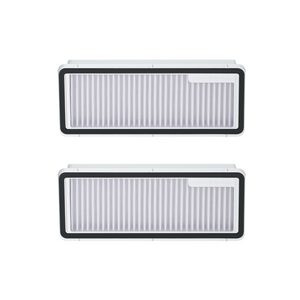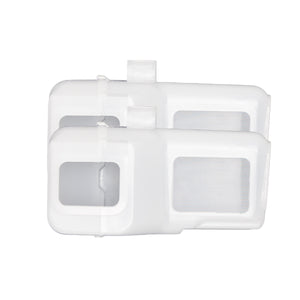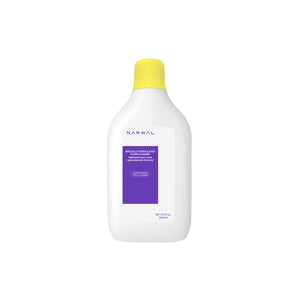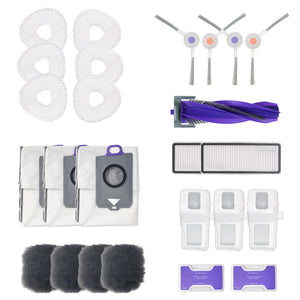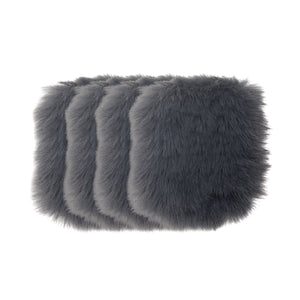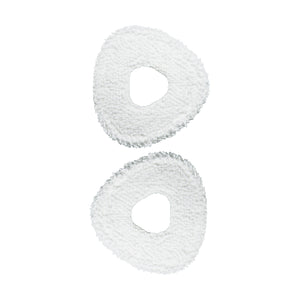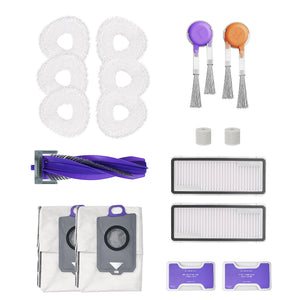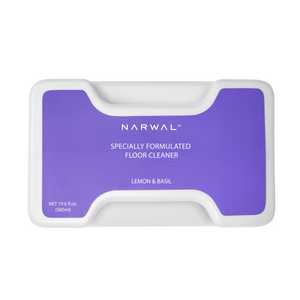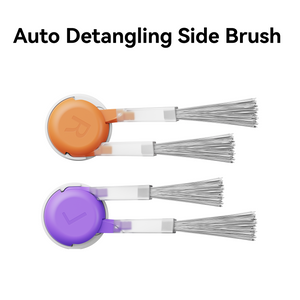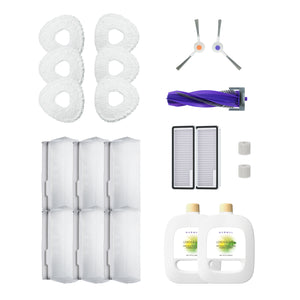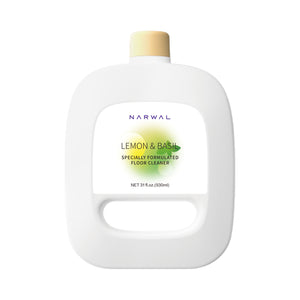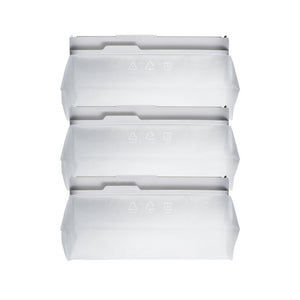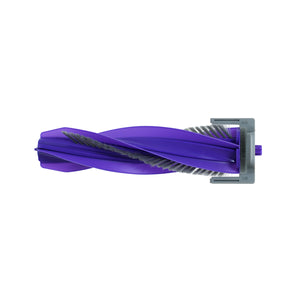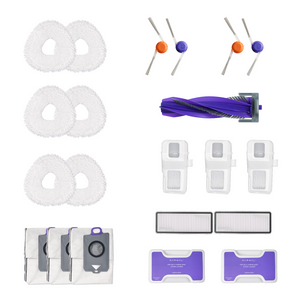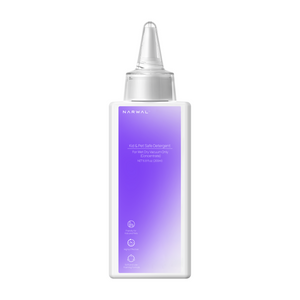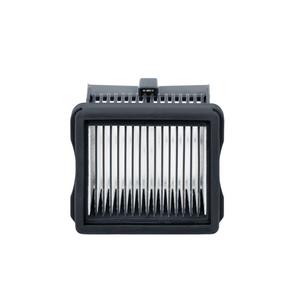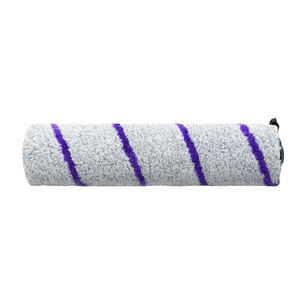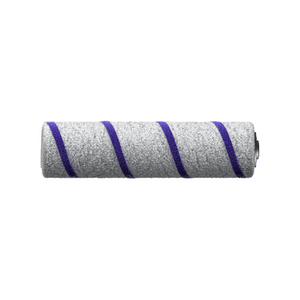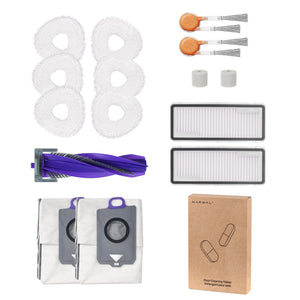Silk rugs offer unmatched beauty and luxury, but their delicate fibers require careful maintenance to preserve their vibrant colors and softness. Unlike synthetic materials, silk is highly sensitive to dirt, moisture, and harsh cleaning methods, which means it demands special care.
This guide will walk you through the essentials of silk rug cleaning. We’ll cover how to properly clean and dry your rug, eliminate odors, and handle special stains. We’ll also discuss the best maintenance practices to ensure your rug stays beautiful and lasts longer.
How to Clean Silk Rug?
To clean a silk rug, start by inspecting it for any damage, then gently remove dust and debris. You can choose between dry cleaning or wet cleaning based on the rug’s condition. Afterward, ensure proper drying and eliminate any odors using safe methods.
Each step is important to preserve the rug’s delicate fibers and maintain its appearance.
Step 1: Inspect Your Silk Rug
Before cleaning, thoroughly inspect your silk rug for any damage, such as tears, holes, or discoloration. Check for any stains or spots that need special attention. This step ensures that you address any existing issues before starting the cleaning process, preventing further damage during cleaning.
Step 2: Clean Dust and Debris
-
Use a Soft Broom
Gently sweep the rug with a soft broom every few days to remove surface dust. This helps prevent dust from settling deep into the fibers, ensuring the rug stays clean and prolonging its lifespan.
-
Hang and Beat the Rug
If needed, hang the rug over a clothesline and lightly beat it with a soft broom to release any trapped dust.
Be cautious not to use excessive force, as this can damage the delicate silk fibers.
-
Vacuuming
Vacuum the rug regularly with a soft brush attachment or brushless vacuum head. Always vacuum in the direction of the rug’s grain to prevent pulling out fibers. Avoid using a vacuum with a beater bar, as this can damage the silk fibers.
If using a robot vacuum, choose a model that can automatically adjust suction power for carpets. Narwal robot vacuums are a great option, as they can raise the mop when detecting a carpet to avoid getting it wet. You can also set virtual boundaries to prevent the vacuum from entering the rug area.

Step 3: Choose Dry Cleaning or Wet Cleaning
-
Dry Cleaning
Dry cleaning is best for silk rugs that are lightly soiled or have delicate patterns and fringes.
To clean, sprinkle a dry cleaning powder or foam onto the rug. Use a soft-bristled brush to gently work it into the fibers. Let the solvent sit for about 30 minutes, then vacuum it up along with any dirt.
This method doesn't use moisture, so it helps protect the silk fibers from damage.
-
Wet Cleaning
Wet cleaning is a good choice for silk rugs with heavy dirt or stains.
First, test a small area to make sure the cleaning solution doesn’t cause any color fading. Use a mild detergent designed for silk and apply it gently with a soft brush. Be careful not to oversaturate the rug.
After cleaning, rinse the rug with cold water and let it air dry.
Step 4: Dry Your Silk Rug Properly
After cleaning, air dry the rug by laying it flat on a clean surface. Avoid direct sunlight and heat sources, as they can cause shrinkage and fading. Flip the rug every few hours to ensure both sides dry evenly.
If drying indoors, use a fan or dehumidifier to speed up the process, but avoid strong airflow that could damage the fibers. Ensure the rug is completely dry before placing it back in its original position.
Step 5: Eliminate Odors
To remove odors from your silk rug, sprinkle baking soda evenly over the surface.
Let it sit for at least two hours to absorb any smells. Afterward, vacuum the baking soda thoroughly to ensure no residue is left behind.
For persistent odors, mix equal parts water and white vinegar in a spray bottle.
Before applying, test a small, inconspicuous area of the rug to ensure the vinegar doesn’t damage the fibers. Lightly mist the rug, then blot with a clean cloth. Allow the rug to air dry completely. Avoid soaking the rug to prevent fiber damage.
How to Wash a Silk Carpet by Hand?
- To wash a silk carpet by hand, first test a small, hidden area for colorfastness.
- Fill a basin with lukewarm water (not hot) and add a small amount of mild silk detergent. Gently agitate the water to create a soapy solution.
- Soak the rug for a few minutes, then use a soft brush to lightly scrub any stains. Rinse the rug with lukewarm water until the water runs clear.
- Avoid wringing or twisting the rug to prevent damage. Lay it flat to air dry, avoiding direct sunlight and heat.
How Often Should You Clean Your Silk Rug?
Silk rugs should be cleaned 2 or 3 times every year, depending on usage and exposure to dirt.
For daily maintenance, clean spills or stains immediately and vacuum regularly with a soft brush attachment to remove dust and debris. This helps maintain the rug's appearance and prevents dirt buildup.
How to Clean Special Stains on Silk Rugs?

Special stains on silk rugs, such as oil or pet stains, require immediate attention to prevent lasting damage. Cleaning these stains effectively requires knowing the right approach for each type.
This section explains how to handle oil and pet stains, when to seek professional help, and whether water can stain silk rugs.
Oil Stains
Oil stains on silk rugs require immediate action to avoid permanent marks.
Start by blotting the stain with a clean, dry cloth to absorb as much oil as possible. Avoid rubbing, as it can spread the stain. Sprinkle a small amount of cornstarch or baking soda over the stain to absorb the remaining oil.
Let it sit for 15-20 minutes, then vacuum the area carefully. If the stain persists, seek professional cleaning to ensure no damage occurs to the delicate fibers.
Pet Stains
Pet stains should be addressed as soon as possible to prevent lingering odors and potential damage. Gently blot the stain with a clean cloth to remove excess moisture. Use a mild, pet-safe cleaner and apply it to the affected area, dabbing gently.
Avoid over-wetting the rug to prevent fiber damage. Once cleaned, sprinkle baking soda over the area to neutralize odors and let it sit for a few hours before vacuuming. For tough stains, it's best to consult a professional to prevent further damage.
Seeking Professional Help
If stains remain after trying home cleaning methods or if the rug shows signs of damage, it’s time to call in a professional. Professional cleaners have the tools and expertise to handle stubborn stains and delicate fibers safely.
For older rugs, intricate patterns, or rugs that need special care, professional cleaning is the best option to maintain the rug’s quality and appearance.
Does Water Stain Silk Rugs?
Yes, water can stain silk rugs if not handled properly.
Silk fibers absorb moisture easily, and if the rug is oversaturated, it can lead to watermarks or discoloration. Always use a minimal amount of water when cleaning, and avoid soaking the rug.
If water spills, blot the area immediately with a dry cloth to prevent the stain from setting. For best results, it's advisable to consult a professional cleaner for water-related stains on silk rugs.
How Much to Clean a Silk Rug?
The cost to clean a silk rug varies depending on its size, condition, and the cleaning method used.
On average, professional silk rug cleaning can cost anywhere from $2 to $5 per square foot. If the rug requires special treatments like stain removal or restoration, the price may increase. It's important to get a quote from the cleaning service to understand the total cost, especially for larger or more delicate rugs.
Silk Rug Cleaning Tips

Silk rug cleaning requires special care to maintain its delicate fibers and vibrant appearance. In this section, we’ll explain why new silk rugs often have a lot of lint, and discuss the types of chemicals and tools you should avoid to protect your rug from damage.
New Silk Rug Has a Lot of Lint
It’s completely normal for new silk rugs to shed a lot of lint, especially during the first few weeks of use. This is simply due to loose fibers that were not fully woven into the rug during manufacturing.
Over time, as the rug settles, this shedding will decrease. Regular vacuuming with a soft-brush attachment can help remove the lint, but be patient as it’s part of the natural process of your rug settling into its new environment.
Avoid Using Harsh Chemicals
When cleaning a silk rug, it’s important to avoid harsh chemicals, including strong detergents or bleach, as they can damage the delicate fibers and affect the rug’s color. Always opt for a cleaner specifically designed for silk or other natural fibers.
Harsh chemicals can strip the rug of its natural sheen and cause irreversible damage, so always choose mild, pH-neutral cleaning solutions. If in doubt, it's safer to seek professional cleaning services for tough stains.
Avoid Using Vacuum with Hard Brush Attachments
Vacuuming your silk rug regularly is important for maintenance, but using a vacuum with hard brush attachments can cause significant damage. The stiff bristles can pull on the fibers, causing them to fray or unravel. Instead, always use a vacuum with a brushless attachment or a soft brush setting to gently lift dust and dirt from the rug.
How to Maintain Your Silk Rug?
To maintain your silk rug, you should regularly rotate it, avoid placing it in high-risk areas, and keep it away from direct sunlight. These simple steps will help preserve the rug's beauty and prolong its life.
Let’s break down each tip to ensure your silk rug stays in top condition.
Regularly Rotate the Silk Rug
To maintain your silk rug's condition, it’s important to rotate it every few months. This helps evenly distribute wear, especially in high-traffic areas.
By rotating the rug, you ensure that all parts experience similar use, which prevents uneven damage and helps preserve the texture and appearance of the rug over time.
Avoid Placing in High-Risk Areas
High-risk areas for a silk rug are places where spills, stains, or dirt are more likely to occur. These include areas near food and drink, entrances, or places where pets or children frequently play. Such areas increase the chances of your rug becoming dirty or damaged.
To protect your silk rug, try to place it in areas where it’s less exposed to these risks, ensuring it stays cleaner and in better condition.
Avoid Direct Sunlight
Direct sunlight can cause the colors of your silk rug to fade and weaken the fibers. UV rays break down the natural materials, leading to discoloration and reduced durability.
To protect your rug, avoid placing it in areas with direct sunlight. If this isn’t possible, consider using window coverings to block the sun or rotate the rug periodically to prevent one area from fading.
Can Robot Vacuums Clean Carpets and Rugs?
Yes, they can clean carpets and rugs, but the effectiveness depends on the type of rug and vacuum.
Many robot vacuums are equipped with sensors to detect carpeted areas and automatically adjust suction power for better cleaning. However, for delicate silk rugs, it’s important to use a vacuum with gentle settings to avoid damage.

Smart Silk Rug Cleaning for Long-Lasting Beauty
Taking care of your silk rug can seem like a challenge, but with the right approach, it’s easy to keep it looking beautiful for years. Regular cleaning, avoiding spills, and protecting it from sunlight are key. A well-maintained rug not only looks great but also lasts longer.
If you’re looking to make cleaning even easier, Narwal robot vacuums can help.
With automatic adjustments for different floor types and smart features that prevent damage, they offer a practical solution for keeping your silk rug clean without the hassle. By using a smart vacuum, you can maintain the quality of your rug with less effort, allowing you to enjoy its beauty every day.






















